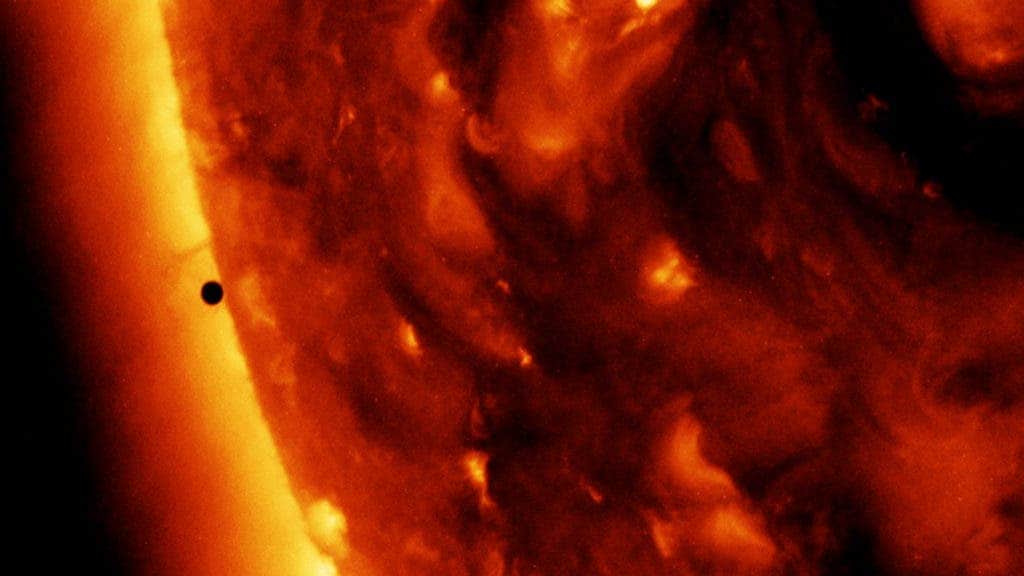The Sun is losing its gravitational lock on the solar system, new research has found.
The planets in our solar system are expanding their orbits, according to a team of NASA and MIT scientists. This drift is caused by the Sun slowly losing mass as it ages, which weakens its gravitational pull. The researchers studied Mercury’s orbit to indirectly measure the amount of mass our star lost.
Midlife crisis
The study began with the team refining Mercury’s ephemeris — its course around the Sun, charted over time. Scientists have been studying this planet and recording its position for centuries now, paying particular attention to its perihelion, the point in its orbit when it comes nearest the Sun.
Because we’ve had such a long observation period of the planet, we know that Mercury tends to shift its perihelion over time — a movement called precession. Part of the cause lies in other planets in the solar system, whose gravitational pulls gently tug at the scorched ball of rock. However, they don’t account for all of the observed precession. Most of what’s left, Einstein tells us, can be explained by the Sun’s mass warping space-time around it — this effect actually helped confirm the theory of general relativity.
But a small part of that precession motion comes down to tiny changes in the Sun’s internal structure and processes. Among them is the Sun’s oblateness (how much it bulges at the equator due to its spin). It was this last category of influences on Mercury’s precession that the team studied.
The researchers drew on radio data which tracked the position of NASA’s MESSENGER spacecraft (Mercury Surface, Space Environment, Geochemistry, and Ranging) while the mission was active. The vessel made three flybys over Mercury in 2008 and 2009 and subsequently orbited the planet from March 2011 through April 2015. By analyzing all the subtle changes in the planet’s motions throughout that time, the team could infer how the Sun’s physical parameters influence Mercury’s orbit.

The position of Mercury over time was determined from radio tracking data obtained while NASA’s MESSENGER mission was active.
Image credits NASA / Goddard Space Flight Center.
They were able to separate some of these parameters from the star’s relativistic effects, something which previous research that looked at Mercury’ ephemeris never managed to do. At the same time, they developed a new analytical method that simultaneously estimated and integrated the orbits of Mercury and the MESSENGER craft. The end result is a solution which takes into account both relativistic effects and processes inside the Sun.
“Mercury is the perfect test object for these experiments because it is so sensitive to the gravitational effect and activity of the Sun,” said lead author Antonio Genova.
The researchers obtained an improved estimate of oblateness that is consistent with other types of studies. However, their estimate of the rate at which the Sun loses mass represents one of the first times this value was based on observation rather than calculated through secondary data. Previously, scientists predicted a one-tenth of a percentage loss of the Sun’s mass over 10 billion years — corresponding to any planet widening its orbit by 1.5 cm (0.5 in) per year per AU (one AU, or astronomical unit, is the distance between the Earth and the Sun).
The team’s observations by-and-large reinforce that estimate — their result is just slightly lower, but being based on observation it is much less uncertain. The team’s results also allowed them to more accurately pin the value of G, the gravitational constant, improving its stability by a factor of 10 compared to previous, estimated values.
“We’re addressing long-standing and very important questions both in fundamental physics and solar science by using a planetary-science approach,” said Erwan Mazarico, paper co-author.
“By coming at these problems from a different perspective, we can gain more confidence in the numbers, and we can learn more about the interplay between the Sun and the planets.”
The paper “Solar system expansion and strong equivalence principle as seen by the NASA MESSENGER mission” has been published in the journal Nature Communications.










